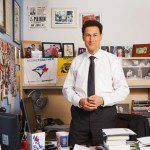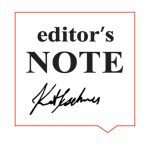Inconvenient Truths
Reflections of a freelance fact checker
The email reached my inbox one January morning. An editor at an American science and history magazine had just sent me an article and wanted to confirm that I’d started fact checking it, “to be sure nothing slips between the cracks.” I replied that I hadn’t touched it yet—I had assumed that he would send me research material, perhaps an annotated draft or at least contact information for sources. He answered, “No, sorry. The writer seems to know what he’s writing about.” Still, he wanted the article checked and returned as quickly as possible. I cringed.
As a freelance fact checker, I often see editors value expediency over accuracy. Publications rarely have enough money or make enough time to vet everything. Most magazines check only their most important pieces—often just the ones that will appear in print, since online stories can be updated with corrections at any time. Yet checking is the most robust tool for ensuring our reporting is credible. It’s hard to see how we can promise good journalism without being accurate.
Lara Zarum, a freelance writer and editor who now works with St. Joseph Media (which publishes Toronto Life and other magazines), recalls a book review that ran in a magazine she used to work for. The writer had skewed some facts and details to fit his line of thought about the book, and Zarum, the fact checker, noticed. But the editor decided to let it slide. “For the handling editor, they were tiny things,” she says. “For me, they were huge.”
As freelancers, both Zarum and I have limited power. If an editor overrules our decisions, we have no formal standing to protest. Admittedly, a magazine editor has different priorities than a checker: while the former has to take readability and style into account, the latter cares only about the facts. But the only defence against inaccuracy is trust in the separation between editors and researchers. An editor shouldn’t be able to supersede a fact checker without good reason.
Now, many magazines have slashed their research departments in hopes of cutting expenses, and responsibilities have changed. Increasingly, editors will pull in freelancers to look at features. They allow little time—I once accepted a “small” last-minute job that took nearly 50 hours—and the checker’s primary responsibility seems to be reducing legal liability: a publication’s ability to point the finger and say, “Look. We checked!”
Even proper fact checking isn’t completely foolproof. Most (honest) checkers admit outright lies can occasionally slither their way into stories. Stephen Glass, who famously fabricated features for American magazines, pulled it off. So did Jack Kelley, a five-time Pulitzer nominee who would script fake sources to prepare for the checker’s calls. Mike Daisey, an American writer, called his spurious reporting “inspired by real events”; John D’Agata, who did the same, argued for “a genuine experience with art.” The list goes on—and those are only the liars who have been caught.
Streamlining fact checking leads to situations like Rolling Stone’s notorious “Rape on Campus” story, which fell apart after The Washington Post caught the story’s main source mid-lie. Some magazines will print inaccurate stories, realize their mistakes and do nothing about it. Just look at The Walrus’s “Above the Fold,” an online piece about recent letdowns in Canada’s newspaper industry: The author, Margo Goodhand, mentioned a 20-year-old Canwest copy editor who was looking over an op-ed about a city he’d never been to, but BuzzFeed determined less than a week later that the subject was in fact a 28-year-old paginator. After scrutiny (and a minimal correction that changed “twenty-year-old” to “twentysomething”), Jonathan Kay, the magazine’s editor, argued that the article is still broadly accurate.
Rudy Lee, an experienced research-editor-at-large in New York City, has seen white lies and mistruths make it into magazines for myriad reasons—consumer magazines trying to please advertisers, entertainment pages catering to celebrity publicists, literary publications indulging star writers. That’s how our checking culture has evolved: from high standards to increasingly lower ones as budgets get thinner. There’s a chance fact checkers may not be able to push back. “When you lose layers of rigour,” Lee says, “things become more convenient.” And it’s hard to bring old methods back.
This doesn’t apply to every magazine and every checking experience, of course. I’ve also worked for extremely thorough handling editors and admired the persistence of employers who gave me an extra 24 hours to make sure I could check every detail properly. There’s a reason the job still exists, and many people working in magazines understand the importance of getting a story right. Still, that appreciation seems to be diminishing.
In the end, though I never received an annotated draft of the history magazine piece, I managed to speak to a couple of the sources. Some details I could never really confirm, but I was satisfied that the article was mostly accurate. In today’s industry, for some magazines, that’s as good as it gets.












































